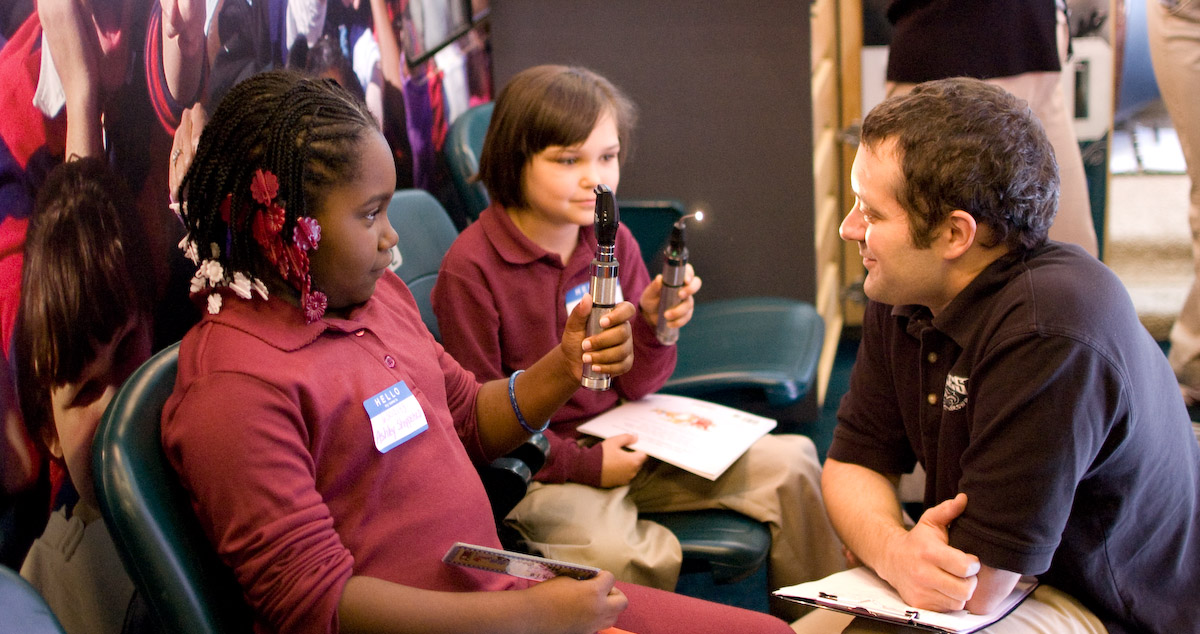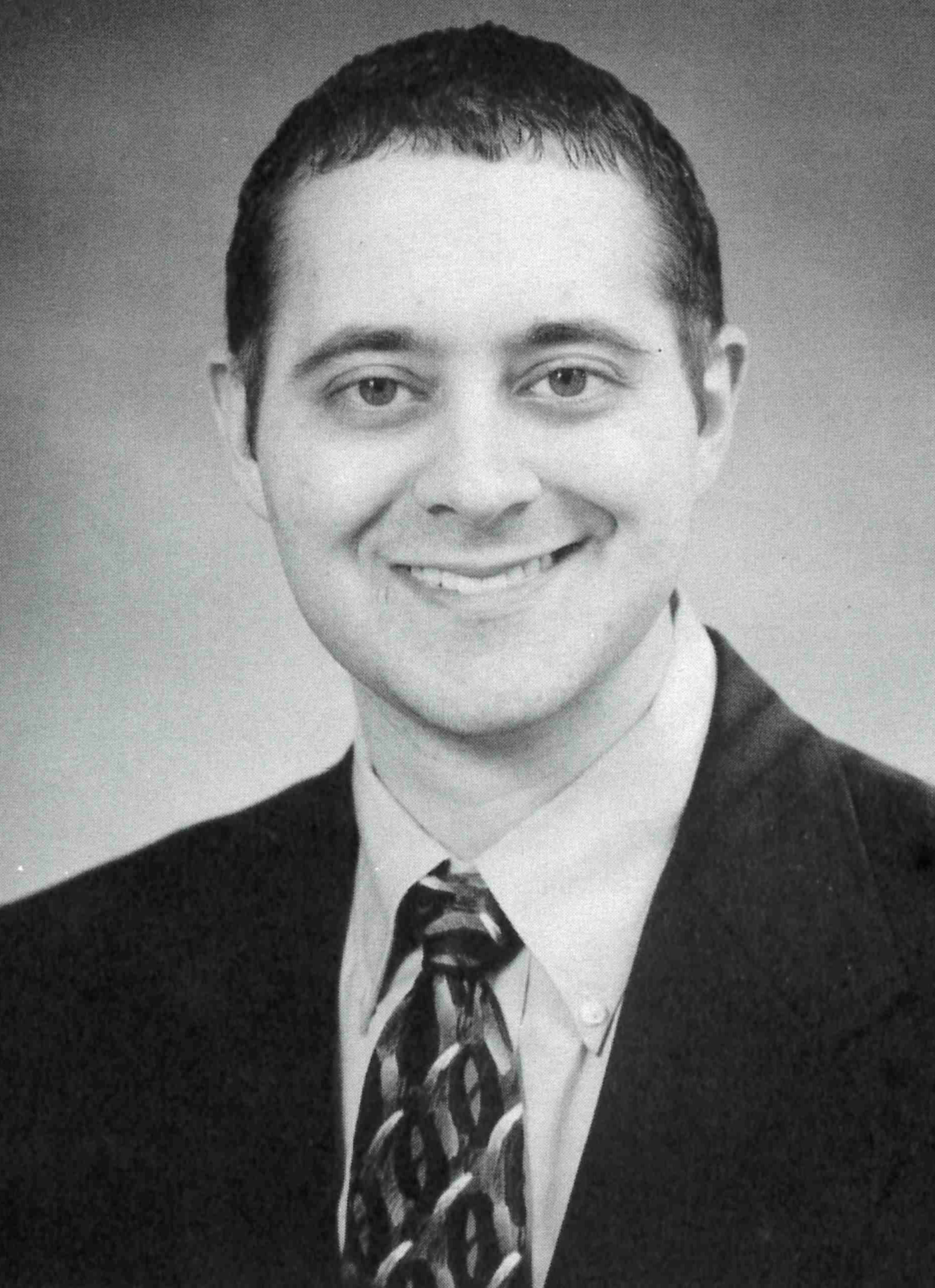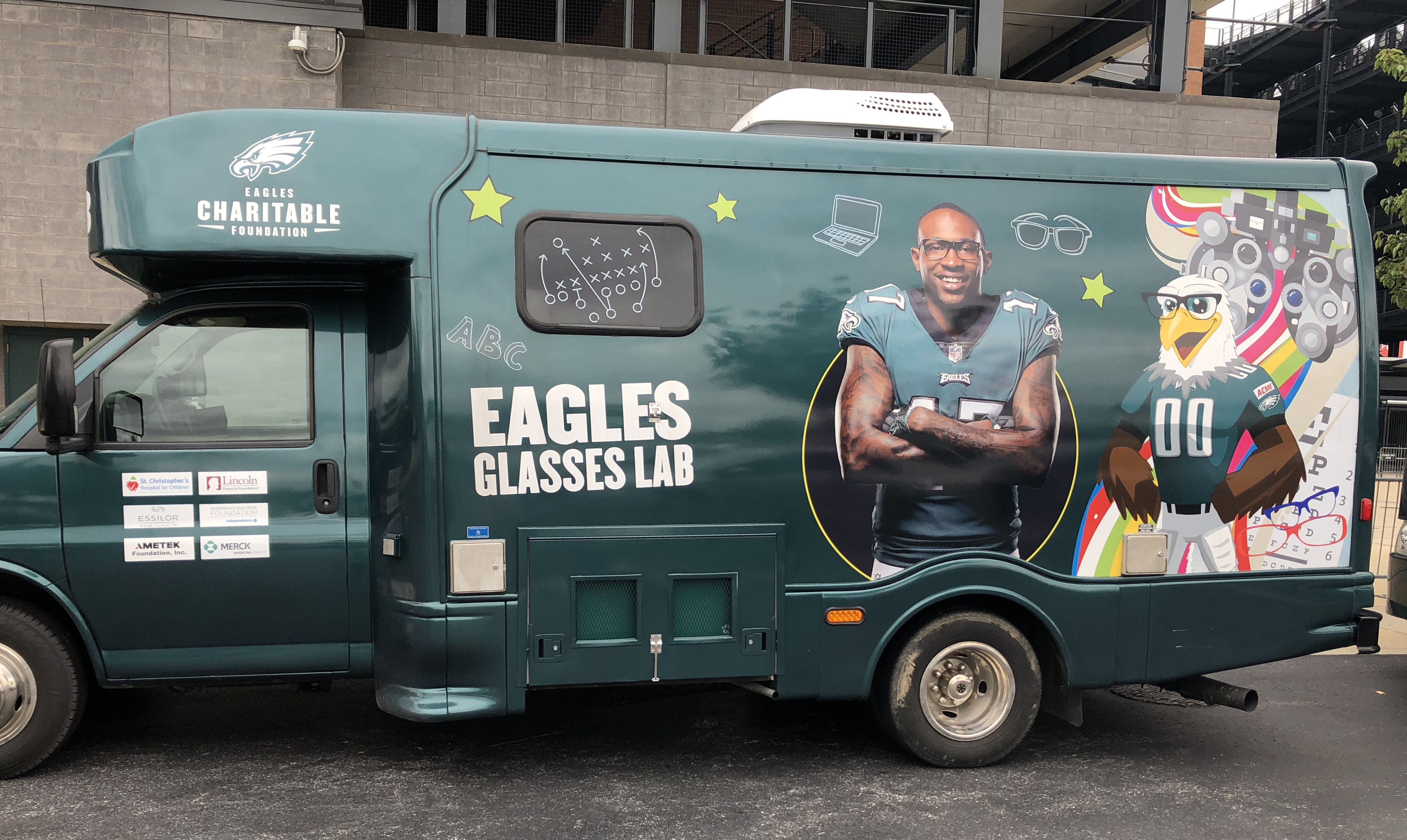 “I’m probably the only Salus alumnus who has a Super Bowl ring,” Dr. Carter Liotta said about his prized possession from the Philadelphia Eagles notable win over the New England Patriots in Super Bowl LII.
“I’m probably the only Salus alumnus who has a Super Bowl ring,” Dr. Carter Liotta said about his prized possession from the Philadelphia Eagles notable win over the New England Patriots in Super Bowl LII.
That’s how Dr. Liotta started the conversation about his experiences since graduating from the Pennsylvania College of Optometry (PCO) in 2003. The summer following graduation, PCO assistant professor, Dr. Gale Orlansky, was the project coordinator for PCO and the Philadelphia School District in a joint effort to meet the vision care needs of Philadelphia’s public school children. “We went into the public schools that were in session for summer school and provided vision screenings for those children,” she said. “I asked several new doctors to be an integral part of this project, and Dr. Liotta signed up.”
Simultaneously, during the four to six-week project, for a short time, PCO was also working with the charitable wing of the Philadelphia Eagles – the Eagles Charitable Foundation and its signature program, the Eagles Eye Mobile – and through this relationship, Dr. Liotta made some connections. Soon after, he segued into working for the Eagles Eye Mobile and St. Christopher’s Hospital for Children and has been ever since. And, while he has a desk at the NovaCare Complex, he’s literally the “driver of the bus” and his actual office is on wheels.
 According to Dr. Liotta, it has been the perfect career choice for him, not only because of the autonomy but also that he gets to enjoy a more equitable work-life balance. "One of the appeals of this job from day one was that it is three-quarter time – about 200 days of the year I’m contracted and I have the summers off. I take the time to travel and be with family, go abroad, it’s a great quality of life,” he said. “That was always the biggest appeal to me.” In fact, this summer, he headed to Thailand - a place where he wants to retire one day – for 10 days of backpacking.
According to Dr. Liotta, it has been the perfect career choice for him, not only because of the autonomy but also that he gets to enjoy a more equitable work-life balance. "One of the appeals of this job from day one was that it is three-quarter time – about 200 days of the year I’m contracted and I have the summers off. I take the time to travel and be with family, go abroad, it’s a great quality of life,” he said. “That was always the biggest appeal to me.” In fact, this summer, he headed to Thailand - a place where he wants to retire one day – for 10 days of backpacking.
But, during the academic year he and his team, which includes himself and three multipurpose certified paraoptometrics, are combing the schools within Philadelphia and its suburbs to provide vision care to children in need much like The Eye Institute of Salus University’s Looking Out for Kids school vision programs.
What does an average day look like, you ask? “We pull up to a school where the school nurse has already identified a lot of kids in need; they have been consented and are ready to be seen. Usually about three at a time, we bring them onto the eye mobile and give them a complete work up – a dilated exam if needed – and if there are problems I can’t address, we refer them out to St. Chris’ and The Eye Institute (TEI) depending on the neighborhood,” Dr. Liotta said, which he said isn’t necessarily the case when examining children in a standard office or practice setting.
If you think of the full school day, they are the hours the vision team adheres to – they arrive in a mobile unit labeled “Eagles Glasses Lab” and emblazoned with Eagles players, mascot Swoop, eye charts, and sponsor logos - at around 9 a.m. and are on-site refracting children until about 2-2:30 p.m. – essentially until right before the last bell rings. On an average day, they see approximately 25 to 30 children trying to not leave any behind and glasses are cut on-site in a mobile lab. Summers – as can be imagined – are slower because schools aren't in session – but at its onset, the team provides vision services to summer camps and health centers.
This upcoming academic year is a transitional year for the program. The model will be changing and the group will be providing quadruple the amount of care through a partnership with Vision to Learn and as a result, would offsite the production of glasses. “The need in the city is just profound,” Dr. Liotta said. As he retold a story about a child who was new to the district and was diagnosed with toxoplasmosis – a parasite in the back of the eye – the notion that it takes a group effort from several organizations is even more profound.
Fellow St. Chris’ pediatric optometrist and former TEI resident, Dr. Jo Ann Bailey, ‘96 who supervised Dr. Liotta as a PCO student, has been working with him since 2013 when she joined the practice. As the doctor who receives his referrals and examines patients on-site at Front Street and Erie Avenue, she agreed. “In 2018-2019, Dr. Liotta and his teammates examined approximately 2,300 students, provided glasses to 1,750 Philadelphia students (75%) and referred 300 for further evaluation and treatment,” Dr. Bailey said. With Vision to Learn, the goal is to perform 10,000 exams, which could lead to the prescription and distribution of glasses to 8,000 students and further evaluation of 1,300 children if the percentages stay consistent. “Imagine giving clear vision to 8,000 children in one school year…the difference of having glasses and seeing clearly will be a “game-changer” for so many,” Dr. Bailey said.
 In September, the Eagles Eye Mobile will consist of two units with three operational eye exam lanes running in addition to bringing on another doctor to fulfill the need and prepare for the increased services. “Mobile medicine is fascinating, you learn to do more with less and get a better sense since you are right there in the community,” Dr. Liotta said. “I often equate it to a MASH unit, it’s kind of like that, you don’t have the full array of equipment that you do when you are in the office so you improvise and you can figure a lot out with basic training alone.”
In September, the Eagles Eye Mobile will consist of two units with three operational eye exam lanes running in addition to bringing on another doctor to fulfill the need and prepare for the increased services. “Mobile medicine is fascinating, you learn to do more with less and get a better sense since you are right there in the community,” Dr. Liotta said. “I often equate it to a MASH unit, it’s kind of like that, you don’t have the full array of equipment that you do when you are in the office so you improvise and you can figure a lot out with basic training alone.”
The Eagles Eye Mobile, Wills Eye Hospital and The Eye Institute collectively provide care to thousands of Philadelphia’s children. And, it is pretty widely known that if you improve a child’s vision, you can improve the child’s ability to learn – this is the reason behind the effort to scale. In fact, it wasn’t until he was in optometry school at PCO that Dr. Liotta was diagnosed with a reading disability which was picked up while he was “playing” with a piece of pediatric equipment - a Visagraph or ReadAlyzer - used for visual processing. As he was about to graduate, he thought back on why lessons or coursework didn’t always come as easily to him. “I can’t rule out that it was visual processing and learning, but it would have been great to know,” he said.
“Poor eyesight obviously affects one’s efficiency in learning. Poor eyesight affects seeing the board and deskwork clearly and comfortably. Poor eye teaming (strabismus, amblyopia, and phorias) can cause eyestrain, blur, and double vision, leading to avoidance of reading and homework. Poor tracking, often a result of poor eyesight, leads to inefficient eye movements and loss of place when reading and copying from the board. Good vision makes learning easier and more enjoyable,” Dr. Bailey said.
Dr. Liotta’s experiences are a prime example of this – he struggled throughout much of his education because of his undiagnosed processing issue, but he never let those struggles discourage him. “If you have to craft a narrative of my story, even the middle of the pack people in the class can still have a good career and good opportunities with the profession,” he said. “Optometry has done well for me and it has been enjoyable, you don’t have to be the smartest person in the class, you just have to know the smartest person to help you.”